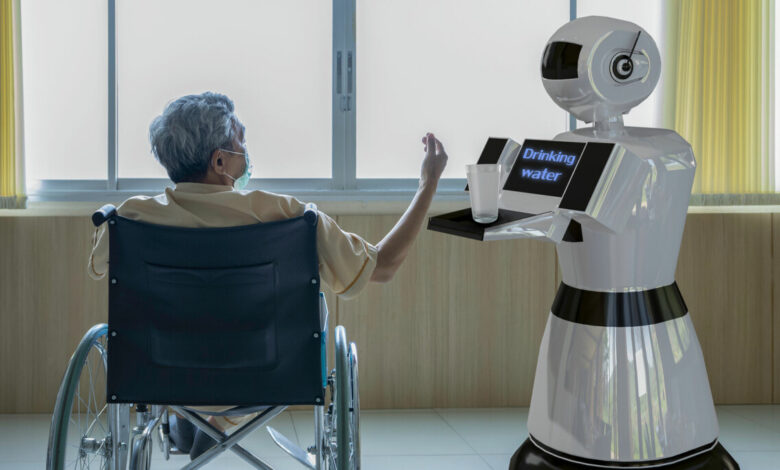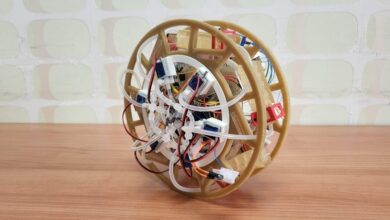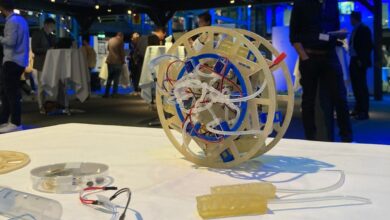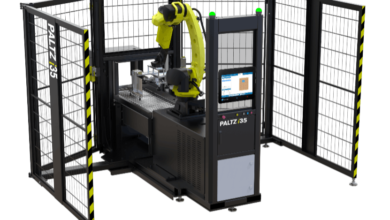People are positive towards care robots

THIS CONTENT IS BROUGHT TO YOU BY THE University of Agder – read more
However, it might not be the elderly who will be the first to use such robots.
The future is far away, until it suddenly arrives.
We have been waiting in vain for flying cars. Robots for domestic use have seemed equally far-fetched – at least the kind that can assist home care nurses and help us with simple tasks as we age and become ill.
“I lost heart when I started reading up on the research in the field. Some of these robots have been in development since 2012. Still, none of them have been put to use in the homes of those who might need them,” says Linda Sørensen.
She researches assistive robots in healthcare at the University of Agder.
Artificial intelligence becomes key
What prevents these robots from becoming truly useful is the difficulty of customising services to individual users.
For example, if I were to bring you water, it’s no problem for me to give it to you in a bottle in your hand, in a glass with a straw, or place it on the table in front of you.
However, such requests can easily trip up the robots we have today.
“There have been huge advances in artificial intelligence. Next-generation robots can learn from their own mistakes and learn what users prefer. Robots that work well in a home environment are now much closer to becoming a reality,” says Sørensen.
Researching the university’s own robot
The first generation of assistive robots was nothing like what we see in science fiction films. They were basic devices with screens that simply reminded users to take their medication or allowed home care workers to communicate through video.
The second generation of robots are those that can assist with physical tasks. They can actually pick things up off the floor and help with simple tasks like feeding and shaving, or getting a glass of water.
“Such robots aren’t in widespread use yet and aren’t easy to get hold of,” Sørensen says.
Sørensen started by conducting a so-called scoping review to see what knowledge exists in this field.
Such a review gives researchers the opportunity to collect knowledge when working in a field where little research has previously been conducted. In a scoping review, researchers look at articles presented at conferences, articles in books, and media coverage.
Traditional research articles from scientific journals are also included in such reviews.
“We narrowed it down from 8,000 to 44 articles. One of the criteria was that they should focus on humanoid assistive robots. We identified 9 such robots within the research, which clearly makes it a narrow field,” says Sørensen.
Awkward and noisy
There were some recurring points in the studies Sørensen found:
- Most people thought the robots were large, awkward, and slow in their movements.
- Some robots have cooling fans, and many found them too noisy.
- Few wanted the robots to look too similar to humans.
- Few were concerned about their privacy when using robots in their homes.
In her own research, Sørensen interviewed users with disabilities. Many of them require a lot of daily assistance. Many have personal assistants.
Sørensen found that for certain tasks, participants welcomed receiving help from a robot rather than a human.
“Someone mentioned that always being nice and thankful to the assistant could be tiring. It felt like being at work when the assistant was present. They imagined that having a robot instead would be great at times,” she says.
Some users needed help with repetitive and tedious tasks that they felt uneasy to ask their assistant for. Even something as simple as eating crisps can be difficult if you’re unable to use your arms.
Can ease care workers’ workload
Sørensen says that when she started working with robots, many were negative about their use in healthcare. Now, the critical voices have mostly subsided.
“Healthcare professionals are also excited about the opportunities robots present. They hope to engage more in nursing-related tasks and have robots take care of the practical tasks that don’t require specialised education,” she says.
Sørensen believes that older people may not necessarily be the first to get a functioning robot assistant. We are more likely to start with individuals living with disabilities who are familiar with various types of technology and may be more open to the idea.
“When you and I reach old age and need this kind of technology, we’ll have seen so many robots that we won’t be afraid anymore, and it’ll be easier for us to embrace new services like this,” she says.
References:
Sørensen et al. Care-receivers with physical disabilities’ perceptions on having humanoid assistive robots as assistants: a qualitative study, BMC Health Services Research, 2024. DOI: 10.1186/s12913-024-10857-9
Sørensen et al. Humanoid robots for assisting people with physical disabilities in activities of daily living: a scoping review, Assistive Technology, 2024. DOI: 10.1080/10400435.2024.2337194.
More content from the University of Agder:



